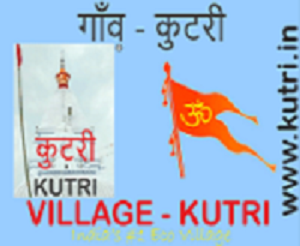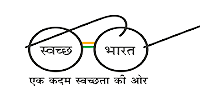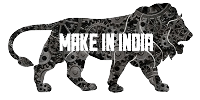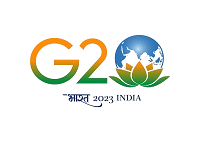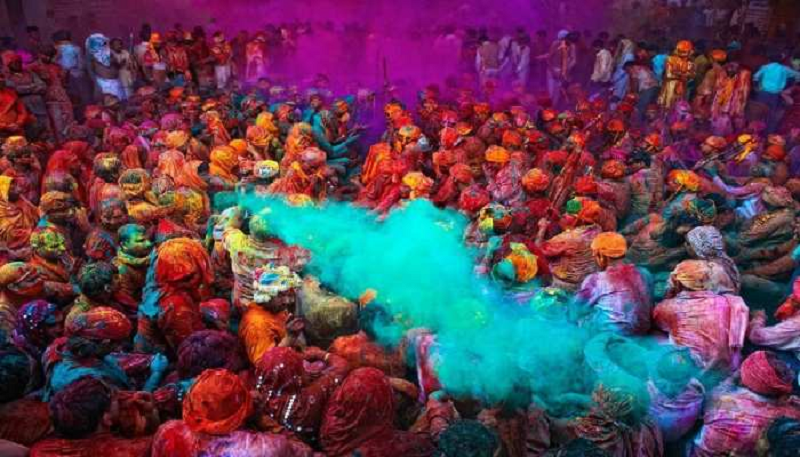
In the Magadh region of Bihar, Holi is celebrated with a variety of local customs and traditions. Here are some common types of Holi celebrations you might find in villages like those in Magadh:
- Lathmar Holi: In some areas, there’s a tradition where people playfully hit each other with sticks (lathis). This is more common in other regions of India, but some villages might have similar playful practices.
- Dhulendi: This is the main day of Holi when people throw colored powders (gulal) and water at each other. It’s a lively celebration with music, dance, and festive foods.
- Choti Holi (Holika Dahan): This takes place the night before the main Holi celebration. Villagers gather to burn effigies of Holika, symbolizing the victory of good over evil. It’s a communal event with singing and dancing around the bonfire.
- Holi Milan: This is a social aspect where people visit each other’s homes, exchange greetings, and apply colors. It’s a time for strengthening community bonds.
- Traditional Songs and Dance: Villagers often celebrate with traditional songs and dances specific to the Magadh region. These can include folk songs and dance forms unique to Bihar.
- Rural Games and Sports: In some villages, Holi is also marked by traditional games and sports. These can be unique to each village and reflect local culture and traditions.
Each village might have its own unique twist on these celebrations, reflecting its local customs and traditions.
What is Required Magadh Holi?
For a traditional Holi celebration in a village like those in the Magadh region, you’ll need a few essential items and preparations:
- Colors (Gulal): Different types of colored powders are used to play Holi. These are usually made from natural ingredients, though synthetic colors are also common. Ensure you have a variety of colors for a vibrant celebration.
- Water: Water balloons and water guns (pichkaris) are used to throw colored water at people. It’s important to have enough water available, especially if it’s a large gathering.
- Traditional Foods and Drinks: Special foods like gujiya (sweet dumplings), thandai (a traditional spiced drink), and other local delicacies are often prepared for Holi. Ensure you have these items ready for the festivities.
- Bonfire Materials: For Holika Dahan, you’ll need wood, dried leaves, and other combustible materials to create a bonfire. This ritual signifies the burning away of evil.
- Music and Dance Equipment: Traditional instruments like dholak, harmonium, and speakers for modern music can enhance the celebration. Prepare some folk songs or dance tracks to add to the festive atmosphere.
- Traditional Clothing: Wear old clothes that you don’t mind getting stained with colors. Traditional attire, such as sarees or kurta-pajamas, is also common.
- Safety and Clean-Up Supplies: Have plenty of water for cleaning up afterward, and ensure you have soap and other cleaning agents to wash off the colors. Consider using natural colors to reduce skin irritation.
- Community Participation: Coordinate with villagers to organize and plan the event, ensuring everyone is aware of the schedule and their roles in the celebration.
With these preparations, you can enjoy a vibrant and joyful Holi celebration in the Magadh region.
Who is Required Magadh Holi?
For a successful Holi celebration in a village like those in the Magadh region, various people play key roles in organizing and participating in the festivities:
- Local Community Members: The villagers themselves are crucial for organizing and participating in the celebration. They help with preparations, such as gathering materials for the bonfire, preparing traditional foods, and ensuring everyone has a good time.
- Village Elders: Elders often play a role in overseeing traditional rituals, such as Holika Dahan. They ensure that customs are followed and provide guidance on the proper way to conduct the ceremonies.
- Event Organizers: In larger villages, there may be a group of people or a committee responsible for organizing the event. They handle logistics, coordinate activities, and manage resources for the celebration.
- Local Musicians and Performers: Music and dance are integral to Holi celebrations. Local musicians who play traditional instruments and performers who lead folk dances add to the festive atmosphere.
- Food Preparers: Those who cook traditional Holi foods and drinks ensure that there is plenty of delicious fare for everyone to enjoy. This might include preparing gujiya, thandai, and other regional specialties.
- Volunteers: Volunteers help with various tasks, such as setting up the event space, distributing colors and water, and cleaning up afterward.
- Guests: Friends and family members from nearby areas or other villages may come to join in the festivities. Their participation adds to the joy and excitement of the celebration.
Each person involved contributes to the vibrant and communal spirit of Holi in the Magadh region.
When is Required Magadh Holi?
Holi is celebrated in the Magadh region of Bihar, as well as throughout India, according to the Hindu lunar calendar. The festival generally falls in March, on the full moon day of the Phalguna month. The dates can vary each year but typically occur between late February and early March.
In 2024, Holi is expected to be celebrated on March 25. The celebration usually starts with Holika Dahan on the evening of March 24, where a bonfire is lit to signify the burning away of evil. The main day of playing with colors and enjoying the festivities is on March 25.
It’s a good idea to check local calendars or community announcements for the specific dates and any regional variations in your area.
Where is Required Magadh Holi?
Holi in the Magadh region of Bihar is celebrated across various villages within that area. The Magadh region includes districts such as:
- Gaya
- Nalanda
- Jehanabad
- Arwal
- Aurangabad
In these districts and their respective villages, Holi is celebrated with local customs and traditions. Specific villages might have their unique ways of celebrating, but the general practices of playing with colors, lighting bonfires for Holika Dahan, and enjoying traditional foods are common throughout the region.
If you’re looking for celebrations in a particular village, it would be best to contact local residents or community leaders for the exact details and activities planned for Holi.
How is Required Magadh Holi?
Holi celebrations in the villages of the Magadh region are characterized by vibrant and lively customs. Here’s a glimpse of how Holi is typically celebrated in these villages:
- Holika Dahan: The festivities begin with Holika Dahan, a ritual that takes place on the evening before the main Holi day. Villagers gather to light a bonfire, which symbolizes the victory of good over evil. This is often accompanied by traditional songs, dances, and prayers.
- Playing with Colors: On the main day of Holi, villagers come together to celebrate by throwing colored powders (gulal) and water at each other. This playful activity is filled with joy and laughter, and everyone—regardless of age—is involved.
- Traditional Music and Dance: Music and dance are integral to the celebrations. Traditional folk songs and dances specific to the Magadh region are performed, often accompanied by instruments like the dholak and bansuri.
- Community Feasts: Special foods and drinks are prepared for Holi. Gujiya (sweet dumplings), thandai (a spiced drink), and other regional delicacies are enjoyed by everyone. These dishes are often shared among friends and family.
- Visiting and Greeting: Villagers visit each other’s homes to exchange greetings, apply colors, and celebrate together. It’s a time for socializing and strengthening community bonds.
- Traditional Attire: People wear old clothes that they don’t mind getting stained with colors. Traditional attire, such as sarees for women and kurta-pajamas for men, is also common during the festivities.
- Games and Activities: In some villages, traditional games and sports are organized as part of the celebration. These might include community sports or other playful activities.
- Clean-Up: After the main festivities, there is often a communal effort to clean up the area and wash off the colors. It’s part of the post-celebration routine to ensure everyone returns to their daily activities comfortably.
Each village may have its unique customs and variations, but these elements are generally common to Holi celebrations in the Magadh region.
Case Study on Magadh Holi?
Holi Celebrations in Kutri Village, Magadh Region
1. Introduction
- Objective: To examine the customs, practices, and community impact of Holi celebrations in Kutri Village, a representative village in the Magadh region of Bihar.
- Location: Kutri Village, District of Gaya, Magadh Region, Bihar, India.
2. Background
- Geographical and Demographic Context: Description of Kutri Village, including its population size, economic activities, and cultural background.
- Historical Significance: Overview of how Holi has been celebrated historically in this village.
3. Holi Celebrations
- Pre-Festival Preparations:
- Holika Dahan: Preparation of the bonfire, gathering of materials, and community involvement.
- Color and Water: Acquisition and distribution of colored powders and water balloons.
- Food Preparation: Making traditional sweets like gujiya and beverages like thandai.
- Main Festival Day:
- Activities: Description of the color play, music, and dance. How the community comes together for these activities.
- Community Engagement: How villagers interact, including visiting each other’s homes and applying colors.
- Traditional and Cultural Aspects:
- Music and Dance: Role of traditional music and dance in the celebrations.
- Traditional Attire: Common clothing choices and their significance.
4. Social and Cultural Impact
- Community Cohesion: Analysis of how Holi strengthens social bonds within the village.
- Cultural Preservation: Examination of how the festival helps preserve local traditions and cultural practices.
- Economic Impact: Consideration of how the festival affects local businesses, particularly those involved in preparing and selling Holi-related goods.
5. Challenges and Adaptations
- Modern Influences: Impact of modernization and changing lifestyles on traditional celebrations.
- Environmental Concerns: Issues related to the use of synthetic colors and water wastage, and how the village addresses these concerns.
- Health and Safety: Measures taken to ensure the safety and well-being of participants, including precautions related to the use of colors.
6. Conclusion
- Summary of Findings: Recap of key insights into how Holi is celebrated in Kutri Village and its significance to the community.
- Recommendations: Suggestions for preserving traditions while addressing contemporary challenges.
7. References
- Sources: Any academic or local sources used to gather information for the case study.
Example Insights:
- Community Spirit: The festival plays a crucial role in fostering community spirit and social cohesion in Kutri Village.
- Traditional Practices: Despite modernization, traditional practices and local customs are strongly upheld.
- Adaptations: The village has made efforts to adapt to environmental and health considerations while maintaining the festival’s vibrancy.
This framework can be adjusted based on specific observations and data collected from the village.
White paper on Magadh Holi?
Holi Celebrations in Kutri Village, Magadh Region
1. Executive Summary
- Purpose: To analyze the current state of Holi celebrations in Kutri Village, focusing on cultural practices, community impact, and emerging challenges.
- Key Findings: Summary of the major insights and recommendations.
2. Introduction
- Background: Overview of Holi as a festival and its significance in Indian culture.
- Scope: Focus on Kutri Village in the Magadh region of Bihar.
3. Village Profile
- Geographical Context: Location, size, and demographic information of Kutri Village.
- Cultural Background: Historical and cultural context of the village, including traditional practices and social structure.
4. Holi Celebration Practices
- Preparatory Activities:
- Holika Dahan: Rituals and community involvement in preparing the bonfire.
- Color and Water Preparation: Methods of acquiring and using colors and water.
- Food and Drink: Traditional foods and beverages prepared for the festival.
- Main Festival Day:
- Activities: Description of the color play, traditional music, and dance.
- Community Participation: How villagers engage in the festivities and social interactions.
- Traditional Aspects:
- Music and Dance: Role of traditional performances and instruments.
- Attire: Typical clothing worn during the festival.
5. Social and Cultural Impact
- Community Building: How Holi fosters social cohesion and strengthens community bonds.
- Cultural Preservation: The role of the festival in maintaining traditional practices and cultural heritage.
- Economic Impact: Effect of the festival on local economies, including small businesses and artisans.
6. Challenges and Issues
- Modernization: Influence of modern practices and changing lifestyles on traditional celebrations.
- Environmental Concerns: Impact of synthetic colors and water usage on the environment, and measures taken to mitigate these effects.
- Health and Safety: Challenges related to health and safety, including the use of colors and potential accidents.
7. Innovations and Adaptations
- Sustainable Practices: Adoption of eco-friendly colors and water-saving measures.
- Community Initiatives: Local efforts to address challenges and preserve the festival’s integrity.
8. Recommendations
- Preservation of Traditions: Strategies to maintain traditional practices while adapting to modern concerns.
- Environmental and Health Measures: Suggestions for improving sustainability and safety during the festival.
- Enhancing Community Engagement: Ways to strengthen community involvement and celebrate Holi more inclusively.
9. Conclusion
- Summary of Insights: Recap of the key findings and their implications for the future of Holi in Kutri Village.
- Future Outlook: Predictions for how Holi celebrations might evolve in response to current trends and challenges.
10. References
- Data Sources: Academic studies, local reports, and interviews used in the white paper.
- Additional Reading: Suggested resources for further information on Holi and its celebrations.
Example Insights:
- Community Integration: The festival serves as a vital occasion for community integration and cultural expression in Kutri Village.
- Environmental Initiatives: The village has begun implementing eco-friendly practices to reduce the environmental impact of Holi.
- Health and Safety: There is a need for more awareness and measures to ensure the safety of participants, especially concerning the use of colors and water.
This white paper can be tailored with specific data and insights gathered from field research and interviews with local residents.
Industrial Application of Magadh Holi?
Exploring the industrial applications of Holi celebrations, particularly in a village like those in the Magadh region, can reveal potential opportunities for local businesses and industries. Here’s how Holi can have industrial applications:
1. Local Economy Boost
- Small and Medium Enterprises (SMEs): Local businesses, such as those producing traditional foods, drinks, and colors, can experience increased sales during Holi. This can be an opportunity for SMEs to expand their market reach and boost revenue.
- Tourism: Holi celebrations can attract tourists to the village, leading to increased business for local accommodations, eateries, and transport services.
2. Color and Dye Industry
- Production and Innovation: The demand for traditional and eco-friendly colors presents an opportunity for businesses involved in the production of natural and synthetic dyes. Innovating with non-toxic and biodegradable colors can cater to environmentally conscious consumers.
- Quality Control: Emphasizing the quality and safety of colors can lead to higher standards in the industry and enhance consumer trust.
3. Food and Beverage Sector
- Traditional Products: The preparation of traditional foods and beverages like gujiya and thandai creates opportunities for food producers and vendors. Businesses can explore packaging, distribution, and marketing of these products beyond the local market.
- Product Development: Developing new products or improving existing ones for the Holi market can provide competitive advantages.
4. Event Management and Planning
- Festivals and Celebrations: The increasing popularity of Holi can lead to a demand for professional event management services. Companies specializing in organizing festivals, providing logistics, and ensuring safety can find new business opportunities.
- Marketing and Promotion: Businesses can leverage Holi-themed marketing campaigns to promote products and services, creating a festive brand image and engaging with customers.
5. Environmental Solutions
- Eco-Friendly Alternatives: There is a growing demand for sustainable and eco-friendly solutions in festival celebrations. Companies that produce biodegradable colors, water-saving devices, and waste management solutions can tap into this market.
- Community Initiatives: Industrial collaboration with local communities to implement sustainable practices during Holi can enhance corporate social responsibility and brand reputation.
6. Cultural and Artistic Industries
- Artisan Crafts: The festival’s traditional attire and decorations offer opportunities for artisans and craftspeople to create and sell culturally significant products.
- Cultural Tourism: Promoting the village’s unique cultural heritage through Holi celebrations can foster cultural tourism, leading to business growth in sectors related to heritage tourism.
7. Health and Safety Products
- Protective Gear: As concerns about health and safety during Holi increase, there is a market for products like skin-safe colors, protective clothing, and first-aid kits.
- Education and Awareness: Companies can engage in creating educational content about safe practices during Holi, which can be marketed to both consumers and event organizers.
Example Case:
Color Production Company: A company specializing in producing natural and eco-friendly colors partners with local artisans to create unique Holi color products. They develop a marketing campaign that highlights the environmental benefits of their products, leading to increased sales and market expansion.
Local Food Vendor: A food vendor in Kutri Village begins packaging and distributing traditional Holi foods like gujiya to neighboring villages and cities. They use local ingredients and traditional recipes to attract customers who want authentic festival foods.
Event Management Firm: An event management company in the Magadh region organizes Holi festivals, providing comprehensive services from logistics to safety. They offer customized packages for different types of celebrations, boosting their business and supporting local communities.
These industrial applications not only contribute to economic development but also support the preservation and promotion of traditional cultural practices.
